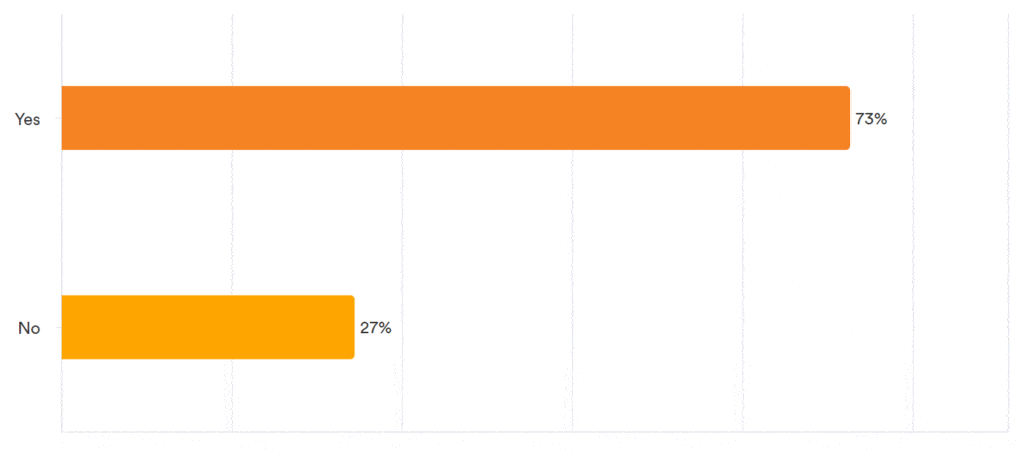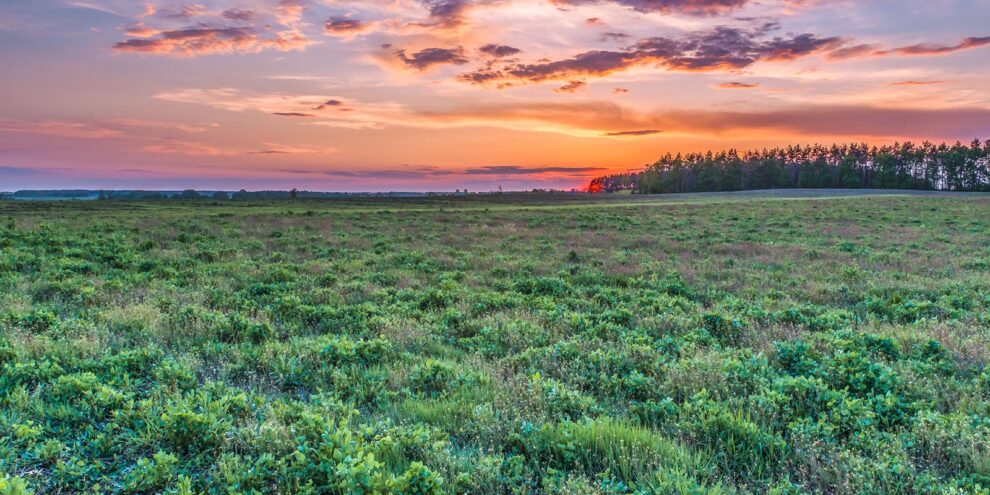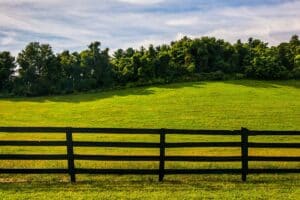According to the July LANDTHINK Pulse results, 73% of respondents believe that higher interest rates will slow the sale of rural land. Anyone shopping for land in the last few years has experienced the land market frenzy. We’re now in the waning days of summer and the land market is cooling down, a bit, as record high prices and rising interest rates are beginning to take their toll. Federal Reserve officials raised interest rates by 75 basis points, moving it to a range of 2.25% to 2.5%. The federal funds rate, which is set by the central bank, is the interest rate at which banks borrow and lend to one another overnight. The federal rate is different than the rate that consumers pay, but the Fed’s moves still affect the borrowing and saving rates they see every day. When the Fed hikes interest rates, you’ll see rates on credit cards, mortgages, personal loans, student loans, car loans and more start to tick up as well.
Last month, the July Pulse asked: Will higher interest rates slow the sale of rural land?

In addition to rising prices, inflation is taking a larger chunk of prospective land buyers’ income and the increased cost of borrowing is reducing their purchasing power. There is a lot of speculation on whether or not higher interest rates will thwart would-be land buyers in the coming months. Here are a few ways that higher interest rates could change the rural land market:
Fewer Interested Buyers
Higher rates mean more prospective land buyers could be priced out of the current market and opt out of making a land purchase altogether. Higher rates will likely reduce buyer demand and decrease completion among buyers.
Uptick in Inventory
The slowdown in demand means more properties will be left on the market. This could take a while, as inventory has yet to return to pre-pandemic levels. And even as options increase, competition for rural land remains strong, keeping prices elevated.
Bidding Wars Will Cool
After two years of a pandemic-driven buying frenzy, that sent land values soaring, the competition for listings is showing signs of cooling off. The combination of fewer buyers and more inventory is making bidding wars less common, so buyers may have an easier time bidding around the list price, or may not have to bid at list price at all.
Slow the Rate of Price Appreciation
Pandemic land-buying hotspots, like the Southeast U.S., with steep price appreciation, will likely see a slowdown in price appreciation and restore affordability to pre-pandemic levels.
Listings Will Linger Longer
For land sellers, talk of a recession could mean the raging seller’s market they’ve enjoyed for the past two years could be waning, dragging down prices and profits. Recession talk sends worrisome ripples throughout many areas in our lives, and the rural land market is no exception. Inventory is creeping up, but still remains low, so demand for that limited inventory will remain strong, particularly in hot markets.
There is no need for would-be land buyers to panic over rising interest rates or let it discourage them from going after a land loan for a property they want to own. Average land loan rates have started to tick up, but because the Fed is rolling out rate hikes incrementally, for the time being, potential land buyers can benefit from interest rates that are still relatively low. The amount of interest charged will largely depend on several factors, such as how much is borrowed, the strength of the buyers’ application, as well as the type of loan and the intended land use.
Rural lenders are usually a good place to start, since they offer tailored lending options with different interest rates available based on rural property types. Rural lenders get their financing from a different source than those financing home loans. Their financing comes from the Farm Credit System, a nationwide system of financial institutions which provide credit to farmers, agricultural concerns, and related businesses. Buyers should seek advice from several lending professionals and explore all financing options, including owner financing and home equity line of credit, which has a lower interest rate than land loans.
The rural land market will likely continue at a strong pace, because land is a limited resource and a safe and solid investment. So far, 2022 has been pretty unkind to investors. Financial markets have taken a wild ride, with dramatic swings in both stocks and cryptocurrency values. Historically, investors have leaned on land as a stable cornerstone of their portfolio. Higher-net-worth buyers flocking to property in tumultuous times is not a brand new phenomenon. Hard assets like timberland and farmland are a good hedge against both inflation and economic downturns. They can provide a continuous cash flow from leases and timber income, as well as tax benefits.
Although the rural land market appears to be shifting this is more due to extreme price appreciation over the past two years. The market is now settling down to a more normal price appreciation rate and heading towards more balanced conditions from an unsustainable peak of last year.
Our informal online survey revealed that 73% of those responding said “YES”, higher interest rates WILL slow the sale of rural land. Only 27% of our audience said “NO”, higher interest rates WILL NOT slow the sale of rural land.
Do you have a suggestion for next month’s Pulse question? Submit your question and we might choose yours!
This content may not be used or reproduced in any manner whatsoever, in part or in whole, without written permission of LANDTHINK. Use of this content without permission is a violation of federal copyright law. The articles, posts, comments, opinions and information provided by LANDTHINK are for informational and research purposes only and DOES NOT substitute or coincide with the advice of an attorney, accountant, real estate broker or any other licensed real estate professional. LANDTHINK strongly advises visitors and readers to seek their own professional guidance and advice related to buying, investing in or selling real estate.










Add Comment